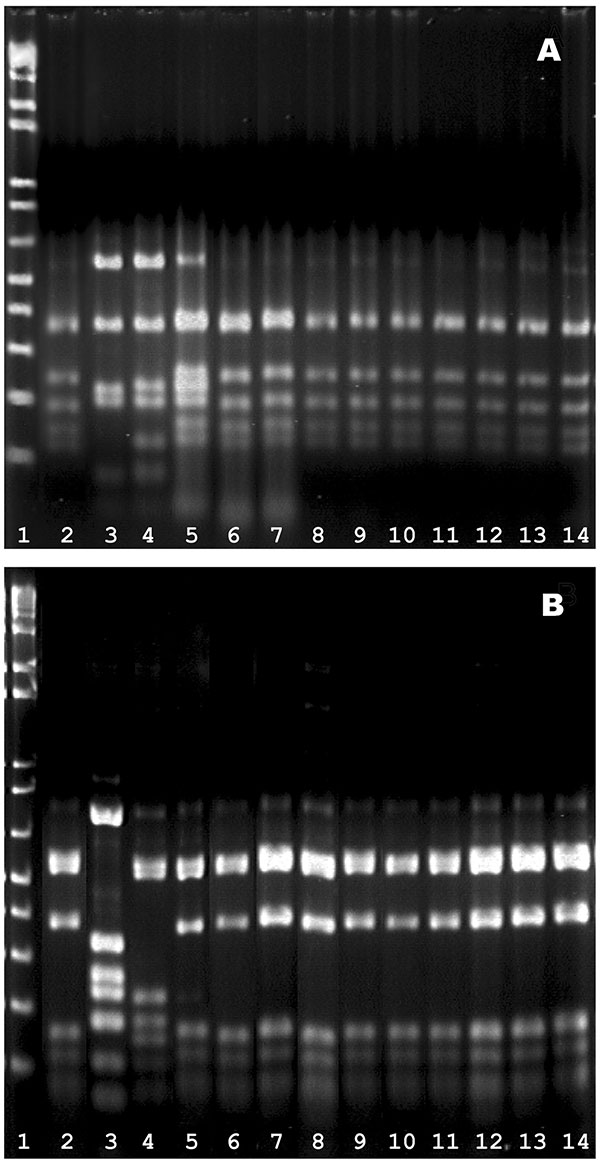Volume 10, Number 7—July 2004
Research
Fluoroquinolone and Other Antimicrobial Resistance in Invasive Pneumococci, Hong Kong, 1995–2001
Figure 2

Figure 2. HinfI fingerprints of the pbp genes. A) pbp2b profiles. Lanes 1, marker; 2, Spain23F-1 clone (SP264, ATCC 700669); 3, a ciprofloxacin-resistant, levofloxacin-susceptible strain S1D3; 4, Spain6B clone (GM17, ATCC 700670); lane 5−14, 10 isolates of levofloxacin_resistant pneumococci (S3F7, S2H9, S1B7, S1B9, S1D5, S2D6, S1D2, S2F3, 186G1, and 216D2 respectively); B) pbp2x profiles. The lanes were arranged in the same sequence as in (A).
Page created: January 27, 2011
Page updated: January 27, 2011
Page reviewed: January 27, 2011
The conclusions, findings, and opinions expressed by authors contributing to this journal do not necessarily reflect the official position of the U.S. Department of Health and Human Services, the Public Health Service, the Centers for Disease Control and Prevention, or the authors' affiliated institutions. Use of trade names is for identification only and does not imply endorsement by any of the groups named above.